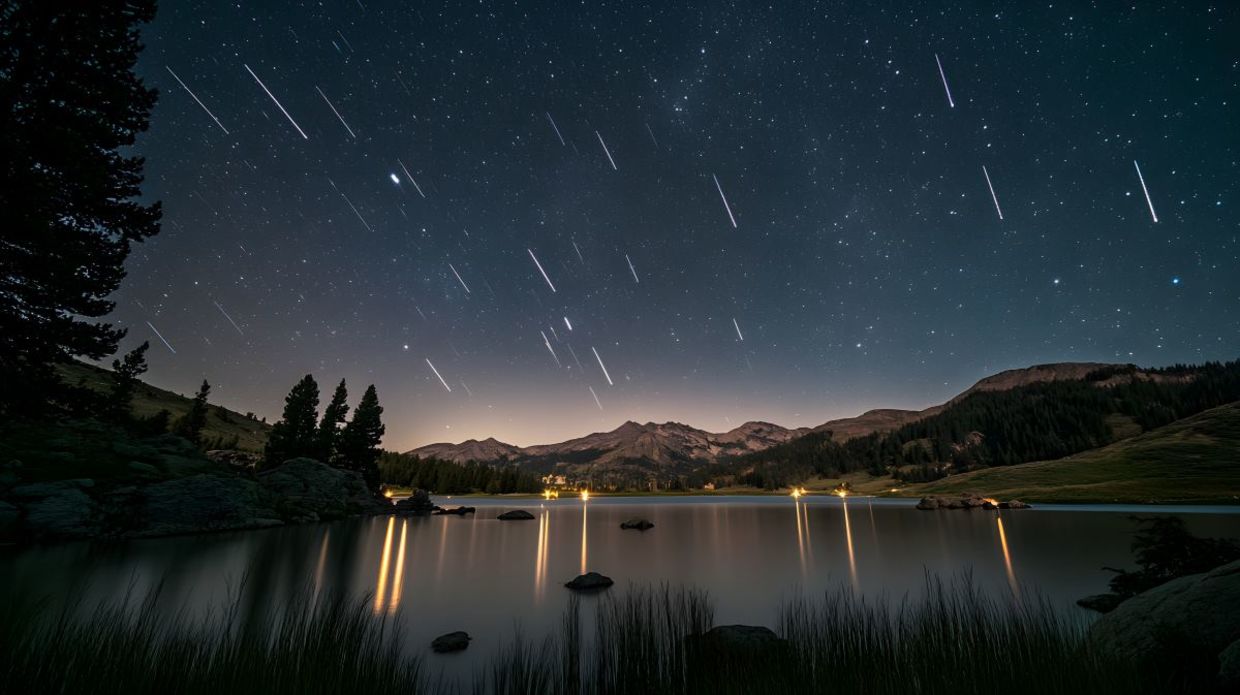
(Jan Garbers / Shutterstock.com)
People have always looked to the sky for insight and inspiration. Ancient civilizations built monuments to track the movements of the planets and celestial events like eclipses were spiritually significant events, according to the Mystical Insights blog. Even today celestial events are not just astronomically important, these events are times of awe. reflection, transformation, and connectedness with the universe.
Get ready for a year of celestial events in 2025. According to National Geographic, the star attractions include solar and lunar eclipses, planetary movements, as well as impressive meteor showers all year long.
Eclipses: solar and lunar
A solar eclipse occurs when the movement of the moon crosses between the Earth and the sun. This obscures the view of the sun from parts of the Earth and was a mysterious and feared event in ancient times, Mystical Insights explained .
Lunar eclipses occur when the moon moves into the Earth’s shadow. This causes the moon to appear darkened and take on a reddish appearance. Lunar eclipses occur every six months during full Moons.
On March 14, there will be a total lunar eclipse and a red Moon – called a blood moon – in early morning, reported National Geographic. The celestial event only occurs when there is a full moon and the sun, Earth, and moon are perfectly aligned. Stargazers can view this event across the Americas starting at 11:57 pm the evening before. There will be another lunar eclipse and blood moon on September 7.
A partial solar eclipse will occur on March 29 that will be visible across parts of North America, Europe, Africa and northern Asia. The best place to view this event is in the Canadian Atlantic provinces and northern Quebec.
Planetary events
Several spectacular planetary events will appear in the night sky over the course of 2025. On January 18, the Saturn and Venus conjunction will make the planets appear less than half a degree apart and will occur 30-45 minutes after sunset. You will be able to view this with the naked eye but using binoculars or a telescope will enhance this amazing view.
On June 26, Mercury – the planet closest to the sun that is difficult to view – will come close to the moon; making it highly visible. You can see it in the western sky around 20-30 minutes after sunset.
Venus and Jupiter – the two brightest planets – will appear very close together and is a rare chance to see both of these stunning planets at the same time on August 12. If you use a small telescope you will be able to clearly see the bands of Jupiter’s atmosphere and four Galilean moons.
The fall will feature two celestial planetary events. On September 19, a trio consisting of the moon, Venus, and the bright star Regulus will be seen together in the early morning sky. On November 8, Saturn’s rings will appear to have vanished. This is a rare event that only happens every 15 years.
Meteor Showers
Meteor showers, scientifically speaking, occur when the Earth travels through a cloud of space debris that are the remains of crumbling asteroids. Seeing meteors – also known as shooting stars – have a deep spiritual meaning for many cultures , according to howstuffworks. Many people believe that shooting stars are a connection between the physical and spiritual realms.
Most meteor showers have a two-day peak when the most meteors can be seen, up to 120 per hour reported The Week. There are four meteor showers that will occur in 2025.
Ring in the new year with the Quadrantids meteor shower that began on December 26, 2024 and will run through January 16, 2025 but this is a much shorter event that lasts only a few hours. The Lyrid meteor shower will occur from April 15 through April 29. This shower originated from the comet Thatcher and is much slower with only 10-12 meteors per hour.
Another meteor shower that overlaps the Lyrid is the Eta Aquarids which originated from the famous Halley’s comet. It runs from April 20 to May 21.
The most spectacular of the four is the Geminid meteor shower that occurs every year in December. The peak will occur on December 13-14 where 60 to 120 shooting stars will be produced every hour. The best place to see this awe-inspiring event is to find a viewing spot with little light pollution, bring a blanket and enjoy the show.
YOU MIGHT ALSO LIKE:
How to Spot Moon Halos in the Night Sky
Bringing Astronomy and Awe to Rural Kenya
Experience Spiritual Awakening Under a Blue Moon







